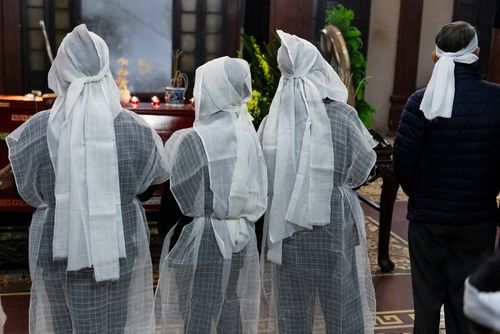 Mourning attire is a powerful expression of grief and respect for the deceased, manifesting distinctively across various cultures, historical periods, and regions. The clothes worn during mourning periods not only signify sorrow but also carry deep symbolic meanings and reflect societal attitudes towards death and the afterlife. Understanding the diverse practices of mourning attire, and exploring how different cultures, historical contexts, and even regional variations within the same country influence funeral customs is helpful for everyone.
Mourning attire is a powerful expression of grief and respect for the deceased, manifesting distinctively across various cultures, historical periods, and regions. The clothes worn during mourning periods not only signify sorrow but also carry deep symbolic meanings and reflect societal attitudes towards death and the afterlife. Understanding the diverse practices of mourning attire, and exploring how different cultures, historical contexts, and even regional variations within the same country influence funeral customs is helpful for everyone.
Western Traditions: The Dominance of Black
In many Western cultures, black has been the traditional color of mourning since the Roman times, but it became particularly pronounced in the Victorian era. Queen Victoria famously wore black for 40 years following the death of her husband, Prince Albert, setting a long-lasting trend that emphasized solemnity and respect for the deceased. In these traditions, black is often associated with the absence of light and a deep solemnity, reflecting the gravity of loss.
However, variations exist even within Western contexts. For instance, in parts of rural Europe, widows might wear specific types of headgear or accessories that signify their loss for years after a spouse's death.
Eastern Perspectives: White as a Symbol of Purity
Contrasting sharply with the West, many Eastern cultures such as China, Korea, and India traditionally use white during mourning. White symbolizes purity and rebirth in these cultures, representing the soul's liberation from the body and the natural progression of life. In traditional Chinese funerals, family members might wear white armbands or headbands to indicate their direct relation to the deceased. Similarly, in India, depending on the region and religion, widows often wear simple, unadorned white sarees as a sign of their mourning.
Islamic Mourning: Subdued Elegance
In Islamic cultures, overt expressions of grief at funerals are discouraged, reflecting a philosophy that emphasizes acceptance of God's will. Mourning clothes are typically modest, with women wearing hijab and loose-fitting garments in subdued colors. Men wear simple, unembellished clothes. The emphasis is on humility and reflection rather than ostentatious display of grief.
African Variants: Colorful Expressions of Life and Death
African mourning traditions can vary dramatically. In Ghana, for example, red is often worn during a funeral as it symbolizes death as well as strength and anger over the loss. Meanwhile, in South Africa, different colors can be worn depending on the age of the deceased; bright colors are typically worn for younger individuals as a celebration of their life, whereas more subdued tones might be chosen for elders.
Indigenous Practices: Integrating Nature and Spirituality
Many indigenous cultures incorporate elements of their natural environment into mourning attire, reflecting a deep connection with the land and spiritual beliefs. For instance, some Native American traditions involve wearing specific animal skins or feathers during mourning rituals, each element chosen for its spiritual significance and protective properties.
Regional Differences within Countries
Even within a single country, mourning attire can vary by region. In the United States, for example, the somber black attire seen at urban funerals contrasts with more relaxed dress codes in some rural areas, where family and community ties often dictate a less formal approach. Similarly, in Italy, the traditional strict black mourning attire of urban areas like Rome contrasts with the sometimes slightly more relaxed norms in smaller towns and villages.
The way people dress to mourn the passing of a loved one is deeply telling of their beliefs, their relationship to the deceased, and their cultural backgrounds. Mourning attire, in its many forms around the world, serves not only as a personal expression of grief but also as a public symbol of communal support and respect for the dead. These practices, rich in symbolism and steeped in tradition, offer a poignant insight into the human experience of loss and the universal need to express sorrow and remembrance.
Add Your Comment